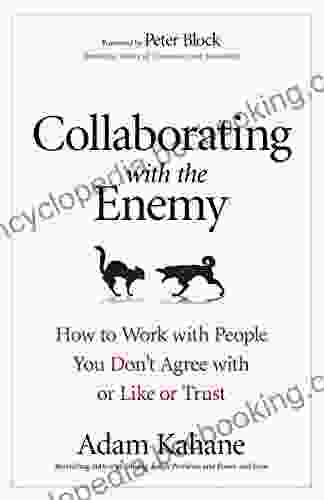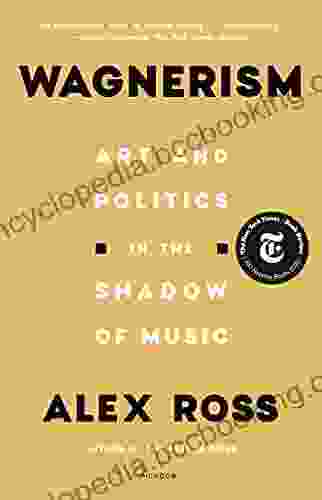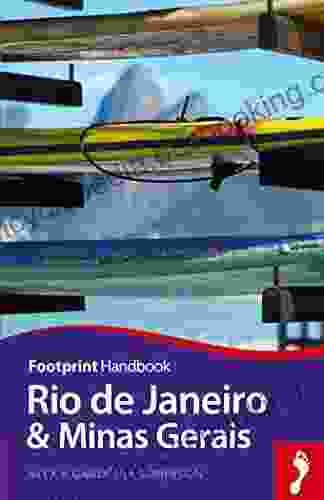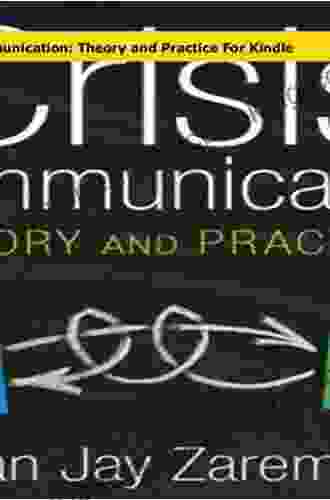Crisis Communication: The Ultimate Guide to Navigating PR Disasters

In today's 24/7 news cycle and social media-driven world, organizations are more vulnerable than ever to reputational damage from crises. A single poorly handled crisis can destroy years of hard-earned trust and goodwill.
Crisis communication is the art and science of managing the flow of information during a crisis to protect an organization's reputation and interests. It involves a variety of activities, including:
- Identifying and assessing potential crises
- Developing and implementing crisis communication plans
- Training spokespeople and other employees on how to handle media inquiries
- Monitoring the media and social media for mentions of the organization
- Responding to media inquiries and managing the flow of information
- Repairing the organization's reputation after a crisis
Effective crisis communication requires a combination of planning, preparation, and quick thinking. By following the principles outlined in this book, you can help your organization weather any storm and emerge with its reputation intact.
4.9 out of 5
| Language | : | English |
| File size | : | 3853 KB |
| Text-to-Speech | : | Enabled |
| Screen Reader | : | Supported |
| Enhanced typesetting | : | Enabled |
| Word Wise | : | Enabled |
| Print length | : | 242 pages |
There are a number of different crisis communication models that have been developed over the years. Each model offers a unique perspective on the crisis communication process and provides a framework for understanding how to manage a crisis.
Some of the most popular crisis communication models include:
- The Grunig and Hunt Model
- The Coombs Model
- The Benoit Model
- The Fink Model
- The Seeger Model
Each of these models has its own strengths and weaknesses, and the best model for a particular organization will depend on its specific needs and circumstances.
Once you have a solid understanding of crisis communication models, you can begin to develop a crisis communication strategy for your organization. This strategy should outline your organization's goals for crisis communication, as well as the steps that you will take to achieve those goals.
Your crisis communication strategy should be tailored to your organization's specific needs and circumstances. However, there are some general principles that all effective crisis communication strategies should include:
- Identify your potential crises. The first step in developing a crisis communication strategy is to identify your organization's potential crises. This involves brainstorming all of the possible events that could damage your organization's reputation.
- Develop crisis communication plans. Once you have identified your potential crises, you need to develop crisis communication plans for each one. These plans should outline the steps that you will take to manage the crisis, including who will be responsible for what and how you will communicate with the public.
- Train your employees. All of your employees need to be trained on your crisis communication plan. This training should cover the basics of crisis communication, as well as the specific roles and responsibilities of each employee.
- Monitor the media and social media. It is important to monitor the media and social media for mentions of your organization. This will help you identify potential crises early on and take steps to address them.
In addition to developing a crisis communication strategy, you also need to be familiar with a variety of crisis communication tactics. These tactics can be used to manage the flow of information during a crisis and protect your organization's reputation.
Some of the most common crisis communication tactics include:
- Media relations. Media relations is the process of managing relationships with the media. This involves pitching stories to reporters, responding to media inquiries, and holding press conferences.
- Social media management. Social media management is the process of managing your organization's social media presence. This involves creating and posting content, monitoring social media for mentions of your organization, and responding to comments and questions.
- Employee communication. Employee communication is the process of communicating with your employees about a crisis. This involves keeping employees informed about the situation, providing them with support, and answering their questions.
- Customer communication. Customer communication is the process of communicating with your customers about a crisis. This involves informing customers about the situation, providing them with updates, and addressing their concerns.
The best way to learn about crisis communication is to study real-world examples. This chapter provides a number of case studies of organizations that have successfully navigated PR disasters.
These case studies provide valuable insights into the principles and practices of effective crisis communication. By studying these case studies, you can learn from the experiences of others and avoid making the same mistakes.
Crisis communication is a critical skill for any organization that wants to protect its reputation and interests. By following the principles and practices outlined in this book, you can help your organization weather any storm and emerge with its reputation intact.
Free Download your copy of Crisis Communication Theory and Practice today and learn how to:
- Identify and assess potential crises
- Develop and implement crisis communication plans
- Train spokespeople and other employees on how to handle media inquiries
- Monitor the media and social media for mentions of the organization
- Respond to media inquiries and manage the flow of information
- Repair the organization's reputation after a crisis
4.9 out of 5
| Language | : | English |
| File size | : | 3853 KB |
| Text-to-Speech | : | Enabled |
| Screen Reader | : | Supported |
| Enhanced typesetting | : | Enabled |
| Word Wise | : | Enabled |
| Print length | : | 242 pages |
Do you want to contribute by writing guest posts on this blog?
Please contact us and send us a resume of previous articles that you have written.
 Book
Book Novel
Novel Page
Page Chapter
Chapter Text
Text Story
Story Genre
Genre Reader
Reader Library
Library Paperback
Paperback E-book
E-book Magazine
Magazine Newspaper
Newspaper Paragraph
Paragraph Sentence
Sentence Bookmark
Bookmark Shelf
Shelf Glossary
Glossary Bibliography
Bibliography Foreword
Foreword Preface
Preface Synopsis
Synopsis Annotation
Annotation Footnote
Footnote Manuscript
Manuscript Scroll
Scroll Codex
Codex Tome
Tome Bestseller
Bestseller Classics
Classics Library card
Library card Narrative
Narrative Biography
Biography Autobiography
Autobiography Memoir
Memoir Reference
Reference Encyclopedia
Encyclopedia 1st Ed 2019 Edition Kindle Edition
1st Ed 2019 Edition Kindle Edition Addison Hodges Hart
Addison Hodges Hart Alan Robert Ginsberg
Alan Robert Ginsberg Albus Mogs
Albus Mogs Ace Landers
Ace Landers Al Lewis
Al Lewis 1st Edition Kindle Edition
1st Edition Kindle Edition Alex Pentland
Alex Pentland Aaron Reed
Aaron Reed Adam Gower
Adam Gower A E Filby
A E Filby Alex Hofstetter
Alex Hofstetter Alessandra Belloni
Alessandra Belloni A N Yard
A N Yard Adam Fletcher
Adam Fletcher Albert Demeo
Albert Demeo Admiral James Stavridis Usn
Admiral James Stavridis Usn Alessio Mangoni
Alessio Mangoni Aimi Aikawa
Aimi Aikawa Alan Jay Zaremba
Alan Jay Zaremba
Light bulbAdvertise smarter! Our strategic ad space ensures maximum exposure. Reserve your spot today!

 Natsume SōsekiTrailblazing Women: Rose Pastor Stokes, Anzia Yezierska, Sonya Levien, and...
Natsume SōsekiTrailblazing Women: Rose Pastor Stokes, Anzia Yezierska, Sonya Levien, and...
 Gabriel MistralCollaborating With The Enemy: A Guide to Building Bridges and Overcoming...
Gabriel MistralCollaborating With The Enemy: A Guide to Building Bridges and Overcoming...
 Henry HayesUnraveling the Labyrinth of Software Complexity: A Voyage Through 'Tackling...
Henry HayesUnraveling the Labyrinth of Software Complexity: A Voyage Through 'Tackling... Oliver FosterFollow ·13.2k
Oliver FosterFollow ·13.2k Ron BlairFollow ·9.2k
Ron BlairFollow ·9.2k Rex HayesFollow ·10.3k
Rex HayesFollow ·10.3k F. Scott FitzgeraldFollow ·2.1k
F. Scott FitzgeraldFollow ·2.1k Carter HayesFollow ·11.8k
Carter HayesFollow ·11.8k Geoffrey BlairFollow ·7.8k
Geoffrey BlairFollow ·7.8k Luke BlairFollow ·18.8k
Luke BlairFollow ·18.8k Isaias BlairFollow ·3.1k
Isaias BlairFollow ·3.1k

 Francis Turner
Francis TurnerArt and Politics in the Shadow of Music
Music has...

 Jaylen Mitchell
Jaylen MitchellHow Algorithms Are Rewriting The Rules Of Work
The workplace is...

 Chandler Ward
Chandler WardRio de Janeiro & Minas Gerais Footprint Handbooks:...
Embark on an extraordinary adventure through...

 David Mitchell
David MitchellThe Story of Depression: Understanding and Treating a...
Delving into the Shadows of...

 Al Foster
Al FosterStatistics Done Wrong: The Woefully Complete Guide
Tired of being...

 DeShawn Powell
DeShawn PowellJulia Child's Second Act: A Tale of Triumph,...
Julia Child is an...
4.9 out of 5
| Language | : | English |
| File size | : | 3853 KB |
| Text-to-Speech | : | Enabled |
| Screen Reader | : | Supported |
| Enhanced typesetting | : | Enabled |
| Word Wise | : | Enabled |
| Print length | : | 242 pages |






